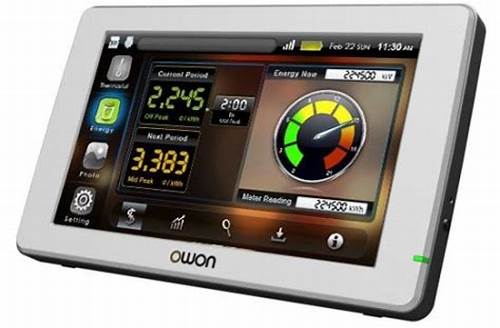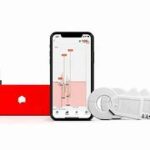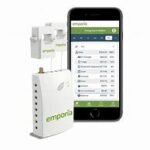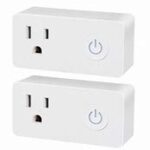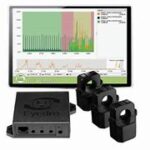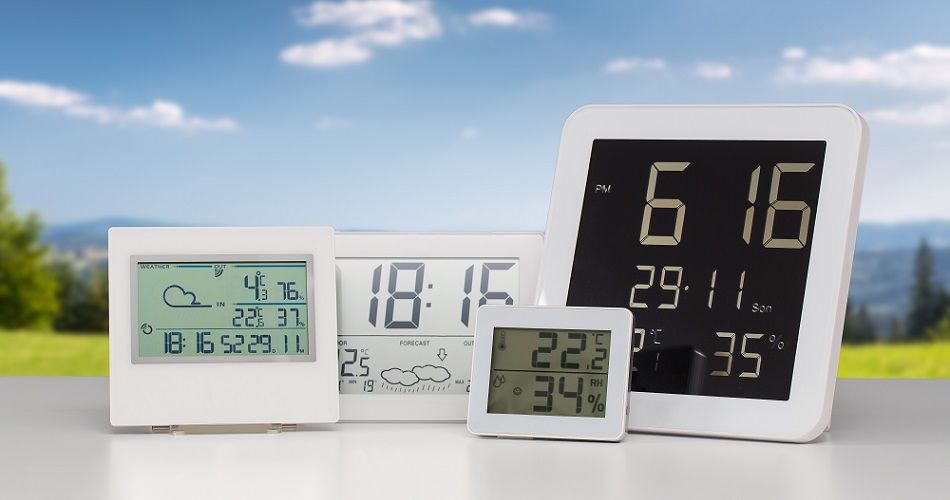Last Updated on May 1, 2024 by Daniel Osakwe
Best Smart Home Electricity Monitor
| Products | Features | Where to buy (New) | Where to buy (Pre-owned) |
| Sense Energy Monitor |
|
Get It on Amazon | Get it on eBay |
| EMPORIA ENERGY Gen 2 Vue Smart Home Energy Monitor |
|
Get It on Amazon | Get it on eBay |
| BN-LINK WiFi Heavy Duty Smart Plug Outlet |
|
Get It on Amazon | Get it on eBay |
| Sense Energy Monitor with Solar |
|
Get It on Amazon | Get it on eBay |
| Eyedro Home Energy Monitor |
|
Get It on Amazon | Get it on eBay |
Are you concerned about the level of electricity your home consumes? If you are, then you need to have a smart home electricity monitor in your house. It will inform you about your electricity consumption and you can reduce the consumption as per your need. There are a lot of options to choose from, but if you want to save your money, then you need to choose the one of the best smart home monitor we’ve reviewed here.
Table of Contents
The 5 Best Smart Home Electricity Monitor.
For conventional, smart, or solar-powered houses, Sense provides whole-house energy monitoring. In order to distinguish specific devices over time and inform users of which devices are active, this monitor uses machine learning. Even while on vacation, keep an eye on things by receiving information about historical use, spotting patterns, setting targets to cut back on energy use, spotting waste, and more.
Connect this monitor to a smart assistant to use voice commands for hands-free updates and energy adjustments, making it easy to conserve energy. To see how long a device has been operating, to get confirmation that an appliance has been shut off, and more, view the dashboard through an app.
You can set up personalized notifications for when you approach peak consumption zones. Alexa, Google Assistant, and other technologies can be integrated with the monitor. An electrician should most likely install this energy meter inside of an electrical panel.
See our review: Sense Energy Monitor
| Pros | Cons |
| Whole-house energy tracker | Slow to detect devices in the first month |
| Tracks when lights are left on or the dryer turns off |
| Pros | Cons |
| Solar generation net metering capabilities | Difficult to retrieve extra data if desired |
| Eight sensors are included, but eight more can be purchased | Data collected and stored on the cloud, not your own device |
| Pros | Cons |
| Voice activation and app control are available | Must be reset if Wi-Fi or power is interrupted |
| Four-pack of individual outlet monitors | Collects and stores a lot of personal information |
| Pros | Cons |
| Customizable notifications | Slow to identify devices |
| Whole-house energy monitoring system | No ethernet port option |
| Pros | Cons |
| Plenty of data options to review | Poor installation can cause inaccurate readings |
| No subscription fees | Only two monitoring clips |
Features to take into account while buying a home energy monitor
Connectivity.
Bluetooth and wireless Wi-Fi connections are your major options for connecting. Although some models offer both of these connection possibilities, you do not absolutely need them to be able to see how much energy you have consumed.
The primary benefit of using a Wi-Fi energy monitor is the ability to transfer the data to an app on your phone or tablet to track history consumption and other things.
Usage Estimation.
Some versions record use in both kWh and dollars and cents so you can see exactly how much your bill should be. Examples include our top choice, the Sense energy monitor, and the Emporia A001 Smart Home Energy Monitor. Other models, on the other hand, simply compute in kWh, so you must determine how much your electricity bill will be on your own.
Compatibility.
You must make sure the energy monitor you purchase is suitable for the voltage in your house. The majority of types are compatible with a range of voltages, including 120/208/240V, although a few are only appropriate for split-phase homes.
Mode of installation.
Most energy monitors are simple to set up; often, all you need to do is plug the gadget into a transmitter, which then transmits pertinent usage information to a control panel.
Others need to be installed into your home’s main panel, which means you’ll need a professional electrician to install the device.
Surveillance System.
You can select an energy monitor that only has a web browser platform to track your use, or you can select one that supports iOS or Android apps.
Power.
Some types, like the Eyedro EHWEM1, for instance, use batteries, but other variants are fueled primarily by power sources. A battery-operated variant can be an excellent option if you need more portability.
Wire Length.
Although it varies from model to model, many energy monitors are pre-wired for a simple installation. Make sure the cords are the right length so you can install the monitor where you need it and aren’t too lengthy, so you trip over them.
Warranty.
Again, this varies from model to model, but in general, you can anticipate receiving a guarantee for your energy monitor of at least one year.
The Verdict
The Sense Energy Monitor is our top recommendation for accurate data on a home’s energy consumption as a whole. Try the BN-LINK Smart Plug if you want to monitor how often a certain appliance or outlet is used.
